
Angela de Nozza contemporary artist
I am Angela de Nozza: Italian painter born in Fano and, after humanistic studies, graduated in Philosophy at the University of Florence where I have been living for many years now.
Attracted from an early age by pictorial expression and being self-taught, I studied in the workshop of the Florentine painter Pirzio and at the American Academy of Charles Cecil in Florence.
In my travels in America I met, among others, the Graffiti painters and the works of Georgia O’Keefe in which I found myself.
My painting is a revisited metaphysics, made up of suspended, almost waiting atmospheres. However, the colors are decisive, the line clear and sure where the image becomes the essence of thinking and feeling.

My Exhibitions
2014
– Gioielli d’artista. Tradition in modernity Exhibition space of the Ente Cassa di Risparmio di Firenze and Horne Museum halls, curated by Ornella Casazza and Laura Felici, promoted and organized by the Art Crafts Observatory Association.
With the work “Passano le barche” he is present in the Collection of the Province of Massa, Palazzo Ducale di Massa.
2013
– Un’altra luce (personal retrospective), Casa Rossa exhibition center (Pontassieve), curated by Ornella Casazza.
2012
– “Dove sta ZA?” 110 Artisti per 110 Anni di Cesare Zavattini, curated by Paolo Della Bella and Aldo Frangioni, Fiesole, Florence.
2009
– L’ordine del caos: costellazioni e miti, National Archaeological Museum, Florence.
– ARTOUR-O, Art Review, Spazio Frau, Rome.
2008
– Quindici Gallerie Quindici Artisti, Forte Belvedere, Florence.
2007
– Non c’è vento (personal exibition), The Court of Contemporary Art, catalog with text by Daniela Cresti.
2006
– Arte nell’Arte, Showhouse, Florence, with Gianni Caverni and Aroldo Marinai, curated by Giulia Ricottini;
2005
– 5 Artisti, Exhibition Hall of Castelnuovo Val di Cecina (Pisa), with Alida Ugolini, Elisabetta Scarpini, Maria Pecchioli, Poggiali Berlinghieri;
– ARTOUR-O (personale), Starhotel Michelangelo, Florence;
– Auguri di Natale, Studio Piergiovanni Paoli, with Stefania Balestri and Aroldo Marinai;
2004
– Inombrandosi (personal exibition), La Corte Arte Contemporanea, Florence, catalog with text by Gustave Durville;
– Quadrivio, Exhibition Hall of Castelnuovo Val di Cecina (Pisa) with Silvia Gardini, Marta Luppi, Elena Scapicchi curated by Sibilla Ferrara;
– Vineart, First edition of the Art Fair in Bolzano, with Luca Brandi, Robert Gligorov, Aroldo Marinai, Stefania Balestri, Gianni Caverni, Donatella Mei, curated by Rossana Tempestini Frizzi;
Angela's Colored Paths - by Laura Felici
Laura Felici
Professor of Art History at the Porta Romana Art School in Florence
The painter was born in Fano and attended the classical high school in the Marche region, continuing her historical-humanistic training in Florence within the Brunelleschi walls of the Faculty of Letters, graduating in Philosophy.
Perhaps it will be the meeting with the testimonies of the past that exude the Renaissance and with the stimulating university environment that Angela becomes fascinated by the city and chooses Florence as her adoptive residence.
She inclined to pictorial expression from a young age, she let herself be guided in the first steps of basic pictorial erudition by a polemical and authentic Florentine which was the master Pirzio. With him she approaches the oil technique and the wide spreads full of color. She remained in the workshop for four years in San Zanobi’s studio and she breathed that lively and direct Florentine spirit which would also pour into the choice of subjects to portray taken from life.
Subsequently, she frequented the painter Charles H. Cecil’s studio for three years in the large and bright spaces of the former church of San Raffaello Arcangelo in San Frediano, adapted as a studio in the first half of the nineteenth century by Lorenzo Bartolini and then by Pasquale Romanelli.
The fascinating environments of the plaster collection on the ground floor induce academic reflection and find the right language to learn the sight-size technique, the undisputed method for the school of truth.
She still has an important year and the one she spends at The Florens Academy of Art in Via delle Casine always in Florence she is in contact with the master Daniel Graves with whom she refines the drawing technique in particular the anatomical one.
Her artistic sensitivity leads Angela to also take an interest in the Applied Arts and in the preciousness of the cultured craftsmanship of the artifacts of the past, so she enrolled in the Antiques courses at the Palazzo Niccolini in via dei Fossi. In addition to the historical path, she knows the pictorial and modeling artistic techniques, obtaining an all-round preparation in the art sector.
In the 80s – 90s you lived a long period outside Italy first in Paris then in NYC; she has made contact with the bohemian environments of the two metropolises, in particular she remains fascinated by the artistic personalities of the East Village such as Keith Haring and the New York writers together with the strong images of the photographer Robert Mapplethorpe.
A two-month journey across the States in the second half of the 1980s, coast to coast on Greyhound Lines buses, taking her to Mexico and Guatemala, touching the encounter with the work of the painter Georgia O’Keefe which will only take place much later , in 2011, at the Rome exhibition and from which she will come out with confirmations on the correspondences of artistic sensibilities between herself, almost reincarnation of the painter of giant shapes and enlargements and O’Keefe.
Some works of her first artistic period, signed Calcagnini, her birth surname, highlight a figurative realism already anticipating vaguely metaphysical atmospheres.
Subsequently her paintings will bear the signature De Nozza, surname of her beloved husband Roberto.
The impalpable and luminous pictorial layout testifies to her antithesis with the solid and sculptural forms of her landscapes. Once again it can be said that painting, like other art forms, send messages to the attentive viewer that speak of themselves and communicate the inner world of each artist.
Angela reflects in her works the contrast existing between the slender and gentle silhouette of her figure with her strong and confident character built with solidity and determination.
The culture of the chromatic palette, sometimes used without the contamination of tonal contrasts, highlights a sensitivity that goes beyond expressionism and pictorial symbolism in an enchanted, immobile and meditated atmosphere.
Oil Paintings on Canvas
My paintings are an emotional representation of human beings and nature. Through the use of bright colors and the use of chiaroscuro, I try to capture the essence of people and objects, bringing out their inner beauty and complexity. My paintings often explore the duality between light and dark, life and death, movement and stillness.
I hope my paintings can inspire empathy and reflection, offering a profound emotional experience for the viewer.
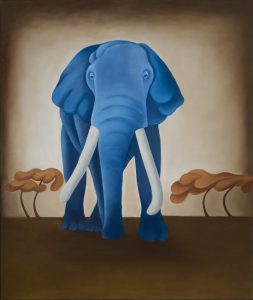
Babar
120x140 Olio su tela 2023
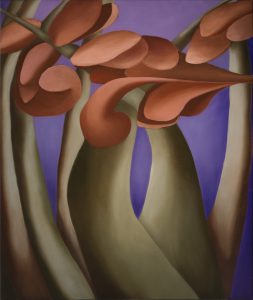
Purple Dawn
120x140 Olio su tela 2023
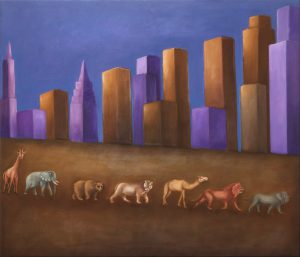
Quo Vadis
120x140 Olio su tela 2023
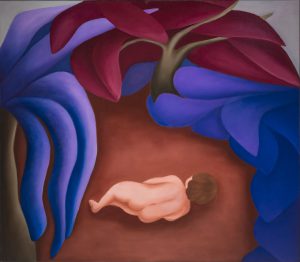
Fearless
120x140 Olio su tela 2023
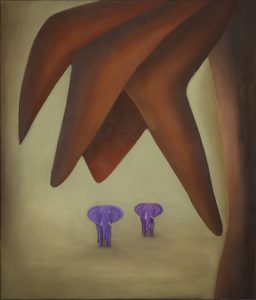
Ombra Africana
120x140 Olio su tela 2023
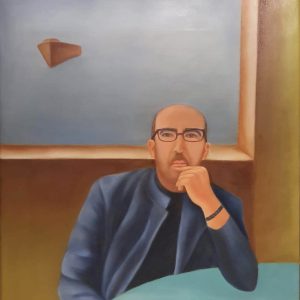
Rêverie
100x80 Olio su tela 2023
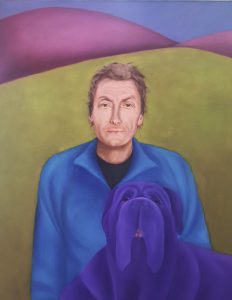
Antiche Colline
100x80 Olio su tela 2023
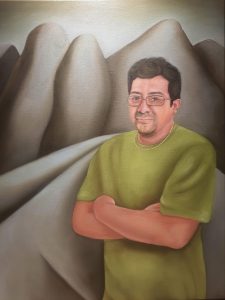
Alla musica lontana
100x80 Olio su tela 2023
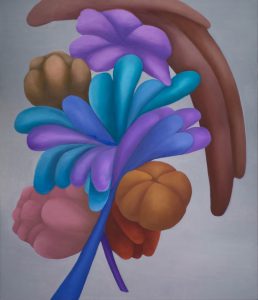
Fires
140x120 Olio su tela 2019
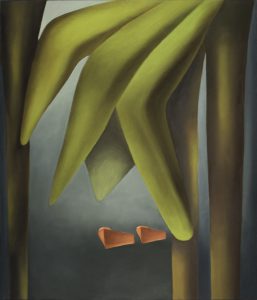
Stavo pensando a un luogo preciso
140x120 Olio su tela 2018
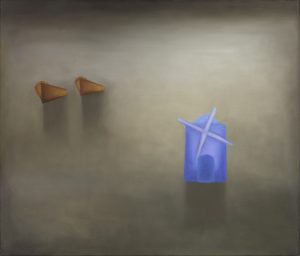
Non c'era bisogno di andare così lontano
120x140 Olio su tela 2018
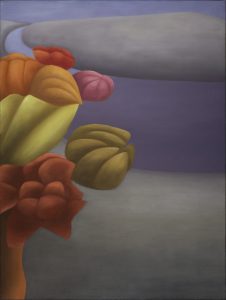
It's only a landscape
100x80 Olio su tela 2018
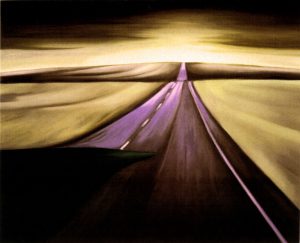
Superflua fuga dall'inutilità
80x100 Olio su tela 2004
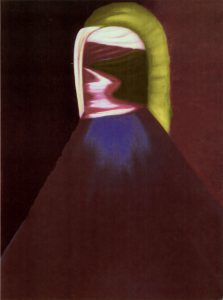
Stringere il nulla
100x80 Olio su tela 2004
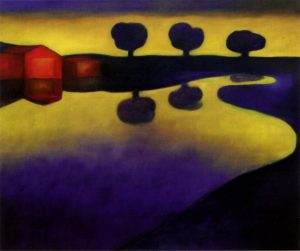
Stanco lago
100x120 Olio su tela 2005
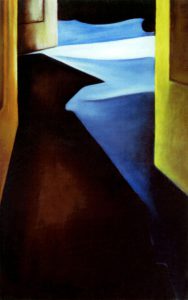
Sintomi di un presagio onirico
100x80 Olio su tela 2004
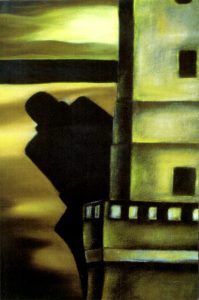
Naufragi nella propria ombra
80x60 Olio su tela 2004
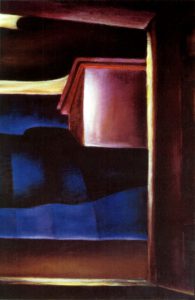
Giocare con le ombre nel silenzio
80x60 Olio su tela 2004
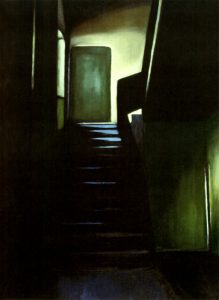
Fantasmi delle proprie illusioni
100x80 Olio su tela 2004
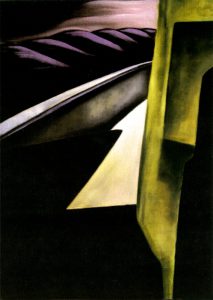
Avamposti di futura memoria
100x80 Olio su tela 2004

Babar
120x140 Olio su tela 2023

Purple Dawn
120x140 Olio su tela 2023

Quo Vadis
120x140 Olio su tela 2023

Fearless
120x140 Olio su tela 2023

Ombra Africana
120x140 Olio su tela 2023

Rêverie
100x80 Olio su tela 2023

Antiche Colline
100x80 Olio su tela 2023

Alla musica lontana
100x80 Olio su tela 2023
Hand made Carpets
My rugs are unique works of art, created with great attention to design and craftsmanship of Nepalese weavers.
I personally conceive each design, which is then handmade using special techniques and high quality materials. Sustainability is a fundamental value for me, so I chose to use low environmental impact transport to bring the carpets to my studio in Florence.
Owning one of my rugs means owning an exclusive object of great artistic value
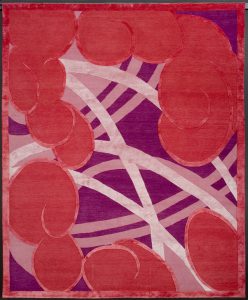
Di bosco in bosco
300x250 Tappetto annodato a mano con tecnica tibetana dalla Galleria Daniele Boralevi 2013
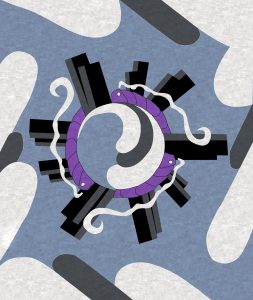
Circle
300x250 Tappetto annodato a mano con tecnica tibetana dalla Galleria Daniele Boralevi 2013
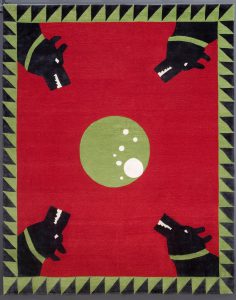
Black out
250x200 Tappetto annodato a mano con tecnica tibetana dalla Galleria Daniele Boralevi 2013
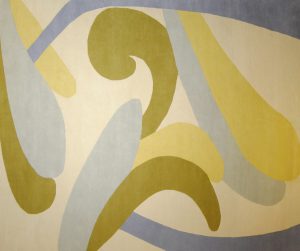
Senza Titolo
300x250 Tappeto annodati a mano in India con la tecnica del nodo Tibetano in lana e viscosa di cotone
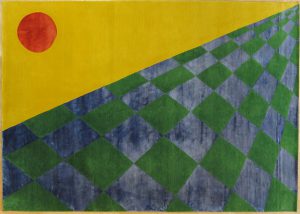
Senza Titolo
320x220 Tappeto annodati a mano in India con la tecnica del nodo Tibetano in lana e viscosa di cotone
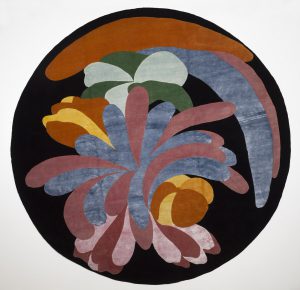
Fires
300x300 Tappeto annodati a mano in India con la tecnica del nodo Tibetano in lana e viscosa di cotone
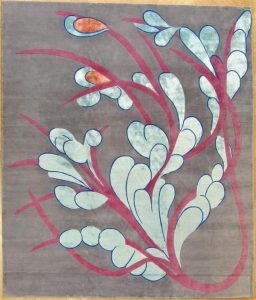
Senza Titolo
300x250 Tappeto annodati a mano in India con la tecnica del nodo Tibetano in lana e viscosa di cotone
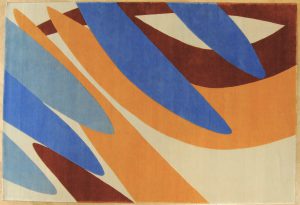
Indonepal
300x200 Tappeto annodati a mano in India con la tecnica del nodo Tibetano in lana e viscosa di cotone
Reviews
ORNELLA CASAZZA ON THE "UN'ALTRA LUCE" EXHIBITION
Ornella Casazza
Art historian, former director of the Silver Museum of Palazzo Pitti in Florence
Angela lives in the splendid Certosa countryside in Florence, in a solitary, silent and perfectly orderly place. She works in the “casina” among the trees, supervised by the Neapolitan mastiff Elia.
It is precisely the tree, a characteristic and inexorable element of the landscape, that plays a special role in her paintings, becoming a precious point of reference to strengthen the bond between her soul and the soul of nature.
The landscapes and the human figure immersed in a natural atmosphere become the mysterious protagonists of its symbolic container of mute and uncontaminated spaces and the trees offer themselves as a rest for the senses through the presentation of a pleasant view. Sometimes they take the place of man and take the form of a refuge; even if without fronds they continue to be a support as elements of the natural cycle of life.
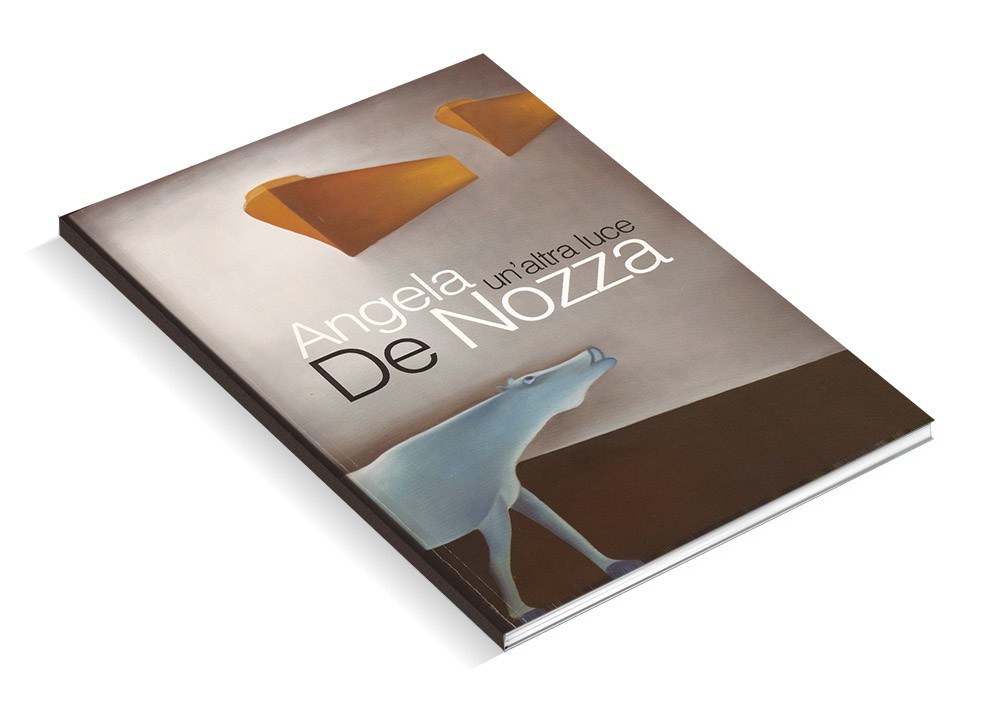
Other times it is nature itself that takes possession of the human features, taking on their appearance: no longer a representation of the real object therefore in “Fra few days I will leave from here” where the folds of the rocks and the treatment of the modelling, combined with a sense of mystery, albeit in a vision based on realism, they describe a sensual woman’s body that has matured over the years. Is her sensuality squeezed between the walls and does she want to free herself from the grip?
Although ready for a trip back down memory lane, to reach places far from reality, undefined and suspended in silent expectation, Angela does not leave, rather she creates a world that does not exist, but which is present in her mind when she meditates on memories of surreal and metaphysical taste. She doesn’t fear the passage of time. Even the present is an abstraction from physical space and the enchantment of immeasurably large places that desire and promise the sea.
With respect to his knowledge of the history of art, of literature, of the iconographic choices of other artists (he especially loves the personality of Georgia O’Keeffe and her oils from the thirties and forties) he maintains his individuality with absolute determination, continually trying to bend nature to his will, to dominate it and to modify reality without being influenced even by the places where he lived. She imposes her spiritual vision of her and passionately ventures into solitary and intimate atmospheres and that landscape presented with that immutable order somehow really resembles her.
She expresses herself with a strong sense of self-control and self-confidence, presenting herself as the antithesis of a vulnerable creature. She is able to choose memory and the present to create new and penetrating images.
To grasp the essence of reality she has created a new universe and another light emerges on the scene, time becomes slower and the solitude less great.
CRISTINA ACIDINI ON THE "UN'ALTRA LUCE" EXHIBITION
Cristina Acidini
Superintendent for the Historical, Artistic and Ethno-anthropological Heritage and for the Museum Complex of the City of Florence
The artistic orientation of Angela De Nozza, a painter of engrossed and cultured visions, is revealed right from the titles of her paintings and her exhibitions.
Formulas such as “lnombrandosi”, “Non c’è vento”, “Before the return”, are long-weighted titles that demonstrate the meditated reflection of his visual repertoire, where senses of slowness or immobility predominate, often of quiet and secluded, in the skilful use of the word and of the phrasing dependent on her humanistic training.

Seas like stone slabs, compact and immobile trees, mountains steep like gray scaly backs of the Earth, translucent ships like floating gems, this and more under severely harsh skies: here are some examples of De Nozza’s iconographic and formal choices, which would frame in that timeless path of Italian art, which a century ago found its definition in the term “metaphysics”.
Compared to the more well-known expressions of that twentieth-century movement, however, De Nozza’s paintings are governed by an even greater synthesis, which is expressed in drafts of essential chiaroscuro, without sun and without shadows.
The numerous exhibitions that have seen De Nozza as a participant or protagonist have given recognition and depth to his artistic personality over time, inclined to follow his own and original paths, bringing the long times of his meditations back on the canvases.
LAURA FELICI
Laura Felici
“The impalpable and luminous pictorial layout testifies to the antithesis with the solid and sculptural forms of his landscapes. Once again it can be said that painting, like other artistic forms, send messages to the attentive spectator that speak of themselves and communicate the inner world of each artist.”
FRANCESCO VOSSILLA ON THE "REST THE HILLS" EXHIBITION
Francesco Vossilla
Francesco Vossilla Historian of art and architecture
“I am vague as the sea like those who have nowhere to stay” (Lao-Tse, Different from the vernacular)
Paintings brought back and forced towards the fantastic, marked by a long and sentimental time. Impalpable, vague measure of feelings and perceptions that would like to make themselves known only in a liquid or sinuous way to reach us. So the image seems to be the figure of what could be memory or desire, or rather something ‘photographed’ beyond reality, both in memory and in research.
A time which, in other words, expands the geometric coldness of the present with its clear-cut names and its ever-decisive contours.
Indeed, the painted forms do not have harsh resolutions, or outlined by sharp lines. Instead, much of the pictorial composition is given through volume and masses, as in fact in the recent and intense Riposano le Colline. Precisely large shapes in volume, rounded in mass, upright in three-dimensionality, plastically reworked to evoke heavy clouds, disturbing flowers but also a truly human, anatomical element, even folds of flesh.
The landscape or – let’s say for simplification – nature resembles us in how much it is swollen with lymph and blood, in the same way as a womb. This sensitive corporeality is grasped like the ruler of the world.
In Fra few days I will leave here from last year, two architectural madmen (definitely tall, squalid blocks of flats) contrast at the tip with a nature of hills built for large fields of green and crossed by a leaden black.
The profiles, sometimes spiral and rolled, are detached and raised in the round, but narrowed by the two lateral shapes. These constructions of oppression – aggressive in their being red and purplish – squeeze and compress the overflowing ‘flesh’ of the green hills. The lateral and oppressive forms are clearly inventions of man, and so they appear to repress or at least infer with the feminine fullness of the hilly landscape. Worst cures for the disease. Further slavery with respect to the very vitality of natural facts already loaded with tensions, with an increase in matter.
Like perspective axes, they recall a fifteenth-century predella organization (I know the one at the base of Donatello’s San Giorgio), and they are different from the background and focus of the painting, found by the artist in a sidereal tangle of hills to surround our miserable horizon.
In both of the works mentioned above, as indeed in other paintings by Angela de Nozza, an apparent inaction or slowness of life hides a force that whispers in those masses and is fertilized in the ‘formal’ contact between us and nature. Between the germinal desire and the seminal legacy of memory.
Between the womb of nature and our round body there is something dark and true, original and always present, which does not have a precise name. So it can’t be too narrow by the hard profiles that were said to be missing in Angela de Nozza’s paintings.
This closeness, or pleasant and reassuring resemblance, shines in Li something has remained: a force whose power never decants, but whose name does not go beyond the limits of the painting. It doesn’t come clear to us; contrasts with the principle of our rational knowing through lucid words. In short, it is impossible to name and define the forms of that landscape. Elements that on the contrary we always come to analyze and that with rigorous prosapia we would like to call precisely.
As in a simple fable pictorial tao, the beginning of heaven and earth are nameless. The omen is based on the memory of a contact that took place, perhaps lost, to disturb every more exotic landscape due to nostalgia.
A world emptied of humans perhaps alludes to a heart emptied of urbanity and individuality, or rather one that trusts only nature itself and that here finds a mirror in which to look at itself as a refuge and rebirth. The disappearance of humans has an entirely ‘island’ flavour; on the contrary, a geographic and sentimental limes must be read in this semantic forcing. That of someone who observes the changing landscape from an island. In it, the human presence is scrutinized and reduced to a datum like any other, as seen in This sea is a mirror. A silver carpet of flat water on which two ancient vessels glide like sea monsters. It is not known who or what goods lead to the painter’s observation point, which she imagines high up on the island. Also in this picture the shapes of the trees move away from two-dimensionality to assume a plastic solidity, infused with bodily sensations. The sculptural character of the landscape does not appear to be reaffirmed as in the male work that attacks the marble; instead he makes the volumes correspond to a more feminine and fairy-tale libidinal intensity, to levitate clouds or essences full of air.
Like dreams, even the large and full forms of nature may not be definable and nameable but become something else. Here you will be able to see, as well as literary references, remote memories of magical expressionism, stronger than the work of Luigi Mainolfi and further back, obviously, the feminine and shamanic strength of Georgia O’Keeffe.
ALESSANDRO SARTI ON THE "UN'ALTRA LUCE" EXHIBITION
Alessandro Sarti
Councilor for Cultural Policies in the Municipality of Pontassieve
I still remember when, a few years ago, I met Angela for the first time, together with her family. It was a hot summer day and, visiting her studio, I found myself together with friends to be able to observe her work, her canvases, all neatly arranged.
We took some of her works out into the garden, leaning them against the plants. As in a “plen air” exhibition, those large canvases, positioned here and there, conveyed a warm sensation of harmony which contributed to the pleasure of being in a particular context of beauty and enchantment. I still remember that the evening ended around her table, with many friends delighted by the excellent dinner, in the presence of the Neapolitan mastiff puppy, Elia, recently born and always in the landlady’s arms.

Time has passed since then, but immediately, in a common understanding with our friend Ornella Casazza, we thought it would be really exciting to host Angela in one of the exhibition venues in Pontassieve. And so it was. Today this artist with a slight Marche accent will illuminate the Casa Rossa with her dreamlike atmospheres, in the exhibition “Another light” curated by Ornella. A light, in fact, that creates magical atmospheres, of pastel colours, of floating images, of green fronds, of caressing animals, of maritime blue reflections, of seductive purple hills.
The Art of a woman, Angela De Nozza, who arrives in Pontassieve, with her captivating load of noble chromatisms, in front of which even silence becomes stillness, so that the poetry of color shines fully in its empathic embrace with the observer as “another light” in fact.
We hope that the light of Art will illuminate, then, this moment of our common life, in which History, hit by the winds of crisis, seems to struggle and flounder between the purely material priorities of survival, and the need not to leave the unforgivable comes culture. The pain would be to lose our own identity. A decline. A shipwreck.
We are here today at Casa Rossa, with Angela De Nozza, to reiterate once again and with all the faith needed to promote not only a project, but a dream, which road Pontassieve has decided to take.
MARCO MAIRAGHI ON THE "UN'ALTRA LUCE" EXHIBITION
Marco Mairaghi
Mayor of Pontassieve
With great pleasure we host the exhibition “Another light” by Angela De Nozza in the Casa Rossa exhibition center. In this exhibition, this artist – from the Marches by birth and Florentine by adoption – demonstrates her sensitivity and her pictorial trait in large canvases that combine emotion and imagination. Another light thus envelops the already luminous Casa Rossa which opens up to a female artist for the first time. The recurring theme of this journey are the trees, giant and enveloping, which together with the elements of nature recreate an artistic context where the same serenity of the Florentine countryside where De Nozza lives reigns. Silence and harmony that communicate the artist’s inner message supported by a decisive and consolidated technique that creates a pleasant enchanted atmosphere.

Per Pontassieve la mostra “Un ‘altra luce” è una nuova opportunità di promozione di un percorso culturale che in questi anni l’Amministrazione Comunale ha proposto e che, in questo caso, acquista un ulteriore valore rappresentato dall’originalità delle opere esposte. Una mostra armoniosa che ben si sposa con le sale che la ospitano e che permette di continuare a promuovere l’estro e le grandi capacità di personaggi del nostro tempo e del nostro territorio.
Una mostra da vedere per scoprire la passione di un artista che ha trovato in questo modo originale di dipingere il proprio mezzo ideale di espressione.
GUSTAVO DURVILLE ON THE "OMBRADING" EXHIBITION
Gustave Durville
Playing with the shadows of silence is Angela De Nozza’s way of painting.
On her canvases, backgrounds intersect, cold tones tend to colonize light spaces, warm tones re-emerge from remote dreams. The superfluous vanishes in an escape that reunites him with her uselessness.
The colors, predominantly warm, move from the unconscious, emigrate by attraction towards the conscious areas of the psyche, binding themselves in a mature chromatic unity that evokes that of wild berries.
During the perceptive journey, the gaze encounters defunctionalized architectures, made obsolete by their presumed usefulness, thus painted, for the eyes of cultures aware of having exhausted the last emotions together with the expectations.
Architectures immersed in unspecified landscapes that are the symptoms of a dreamlike omen, the outposts of her future memory, where by now, nothing happens to leave all the spaces (empty) to the (empty). Having traveled through the chromatic flows and the longer, more extensive backgrounds, every imagination lights up between one glance and another.
Passion is consumed in a mobile labyrinth of shadows that embrace nothingness.
In the silence of the mind a desperate snake dreams of wrapping itself around its partner, imagining being involved in the intensity of an embrace with a real anaconda.
Scattered casually on the canvas are the traces of an impossible eros smeared on the asphalt. Ambiguous, but carefully thought out, is the staging of the notion of “time”. At first glance, the colors used by Angela recall those in use in the 1930s. Arousing attention, it will be possible to observe that this work does not escape the present time, it removes it by moving it to the time of common delusions.
The contemporaneity is marked by the sign of the shadows. Singular is the seduction exercised by the colored ones that reach us from the television screens, imposing themselves up to governing our lives.
Even when they are off, powerful shadows remain, they vanish leaving an anxious halo that extends over the human mind, now reduced to a dump of dreamlike ruins, inhabited by the ghosts of our illusions.
It is with these masses of telematically depressed people, governed by distorting visual habits, that we have to live. Scattered among these subjects armored by the perverse use of all fictions – including politics – remain survivors, vague shreds of dreams.
However sublime the vanity of dreams, getting lost in their atmospheres and surviving by wandering, Angela develops her antibodies. Acting with painting is the way to defend her existential spaces.
It is certainly the luxury with which she gratifies her being in balance. It is the optimistic version so as not to be shipwrecked in one’s own or in the shadows of others.
ORNELLA CASAZZA: "ANGELA DE NOZZA, NEW WORKS INSPIRED BY MEMORY, DREAM, SPACE, TIME, SILENCE AND WAIT"
Ornella Casazza
Art historian, former director of the Silver Museum of Palazzo Pitti in Florence
A long history of excellence distinguishes the value of the artistic and technical quality of the works created in the Fratelli Piccini Jewelery shop on the Ponte Vecchio in Florence since the early 1900s, above all by the precocious genius of Armando who, at just twenty-three years of age, won the First Prize at the 20th Venice Biennale in 1936. At the prestigious event he presented fourteen engraved stones that testified to a great modeling virtuosity combined with a refined elegance of style: these are the precious stones donated by the artist to the Municipality of Florence and today on permanent display , in the prestigious windows of the Museo degli Argenti in Palazzo Pitti. Armando had studied at the Art Institute of Porta Romana, a pupil of the charismatic master Libero Andreotti, forging a sincere and long friendship with the sculptors Antonio Berti, Delio Granchi and then with the painter Elio Fiore Pirzio.
Today the vitality of the historic jewelery can also be measured by its ability to adapt to the culture, style and taste of modernity, without detracting from its recognizable image which has handed down the true dimension of luxury, elegance and beauty. In continuity with the contemporary, Mrs. Laura Piccini and her daughter Elisa present the artist Angela De Nozza with us with an extraordinary exhibition that offers the public new works inspired by memory, dreams, space, time, to silence, to waiting. Armando would also have liked to see these creations at his “home” that enchant at first glance with the tenderness of the blues, pinks, greens, the luxuriance of the vegetation and the refined grace of the depiction.
They enrapture the mind and heart with the preciousness and verisimilitude of the botanical and zoological details, which allow the recognition of the plant and animal species present. Angela lives in harmony with nature, among the trees, in the splendid Florentine countryside of the Certosa and the tree and its Neapolitan mastiff Elia play a special role in her works, often becoming a point of reference for forging the bond between her soul and the soul of nature. The case of the painter is exemplary: by entering the dimension of luxury, she enters the world of jewelery with absolute determination, once again imposing her spiritual vision and her elegant and mysterious charm. Destiny wanted Angela, a pupil of the Florentine painter Pirzio, already a close friend of Armando, to be welcomed to create and exhibit her works in the Fratelli Piccini Jewelery shop, the beloved workshop that kept the famous goldsmith, throughout his life, obliged to demanding, rigorous and insatiable quality.
ORNELLA CASAZZA
Ornella Casazza
Art historian, former director of the Silver Museum of Palazzo Pitti in Florence
“It is precisely the tree, a characteristic and inexorable element of the landscape, that plays a special role in his paintings, becoming a precious point of reference to strengthen the link between his soul and the soul of nature.
The landscapes and the human figure immersed in a natural atmosphere become the mysterious protagonists of its symbolic container of mute and uncontaminated spaces and the trees offer themselves as a rest for the senses through the presentation of a pleasant view. Sometimes they take the place of man and take the form of a refuge; even if without fronds they continue to be a support as elements of the natural cycle of life.”
CRISTINA ACIDINI
Cristina Acidini
Superintendent for the Historical, Artistic and Ethno-anthropological Heritage and for the Museum Complex of the City of Florence
“Seas like stone slabs, compact and immobile trees, steep mountains like gray scaly backs of the Earth, translucent ships like floating gems, this and more under severely harsh skies: here are some examples of De Nozza’s iconographic and formal choices, which would to be framed in that timeless path of Italian art, which found its definition in the term ‘metaphysics’ a century ago.”
Video Interview
Contact me
Fill out the form below to contact me
